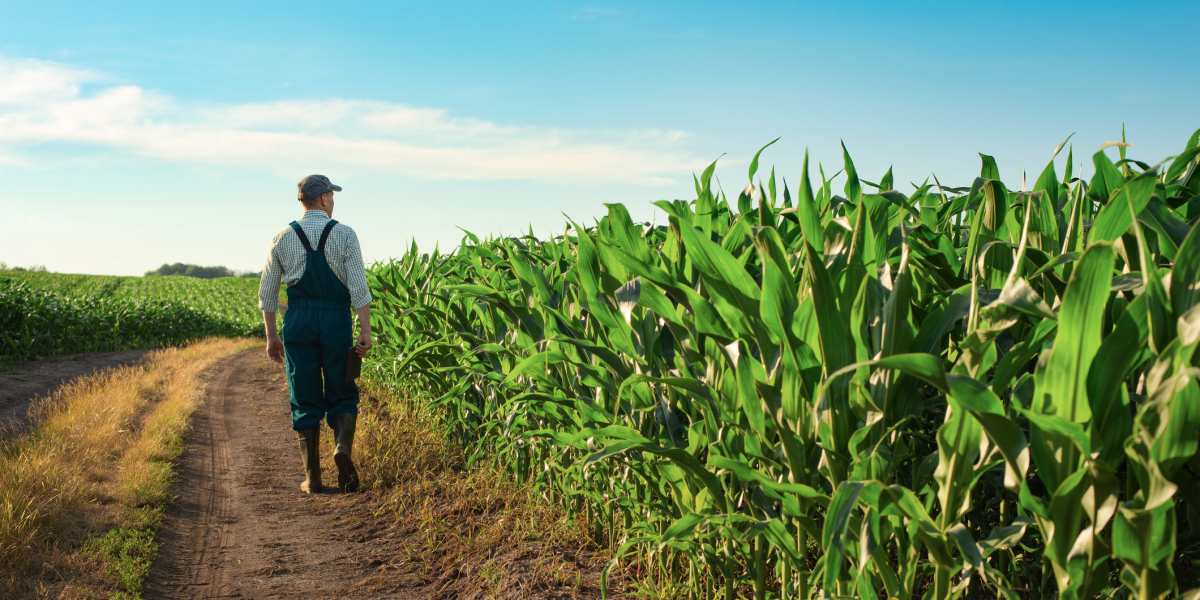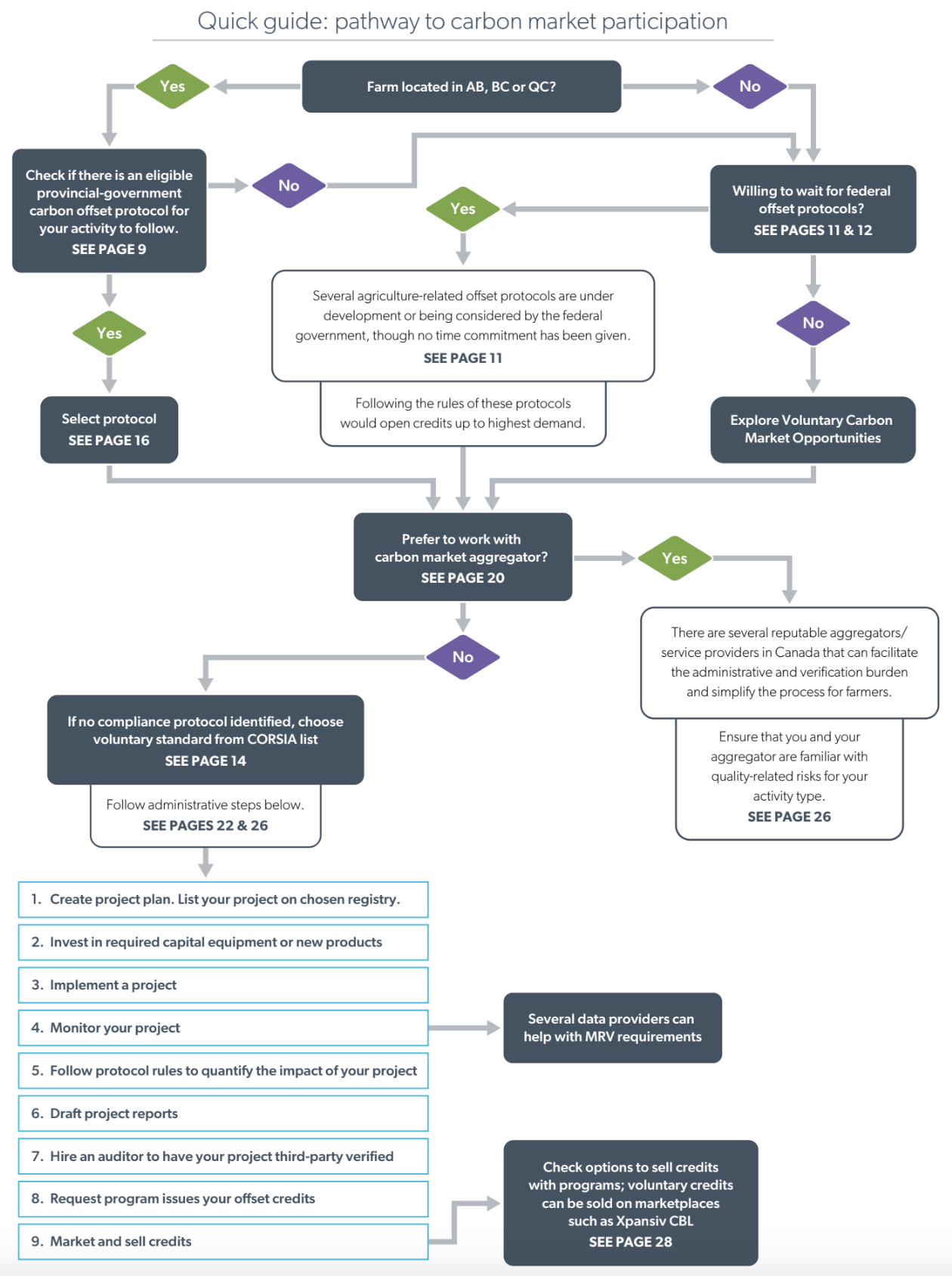
October 27, 2023
Farmers are already important stewards of Canada’s landscapes and can continue to play a vital role in mitigating climate change impacts and halting biodiversity loss by adopting certain management practices; however, farmers need support and economic incentives to adopt these practices and reap the productive, environmental, and social benefits associated with them. Carbon credit and ecosystem service markets are one proven way of leveraging private-sector investment into sustainable practice adoption and supporting the aforementioned outcomes. Carbon markets focus on developing tradable commodities that represent 1 tonne of emissions reductions generated on the farm, and these credits can then be sold to the private sector - acting as a new source of revenue for farmers. Carbon markets are a key opportunity given that global voluntary markets are booming and Canadian compliance markets are expanding.
The path to accessing carbon credits or participating in these markets is not always clear, as there are several different markets, protocols, registries, and administrators to navigate. For this reason, the Smart Prosperity Institute, in partnership with Co-operators, has produced a guide to Canadian agricultural carbon markets, providing a comprehensive assessment of the market opportunities across voluntary, regulatory, and other forthcoming carbon offset systems. The guide will help farmers access new revenue opportunities to support their continued commitment to sustainability and help them navigate the complex, and often opaque world of carbon markets, by providing a concise but comprehensive summary of the state of play in Canada and opportunities to watch.
The report offers a new ‘Quick Guide’ tool, found below, that can help farmers quickly assess what type of carbon market they may want to pursue, based on factors like their location, readiness to act, and interest in working with an aggregator to reduce the administrative burden of participating.

The ‘Quick Guide’ recommends, as a first step, that farmers should consider whether there is a provincial compliance market with relevant protocols available in their home province. This could include Quebec’s existing ‘Carbon Sequestration Through Afforestation or Reforestation’ protocol for farmers interested in planting trees on their farms or could refer to Alberta’s ‘Nitrous Oxide Emissions Reduction Protocol’ for farmers interested in reducing emissions from their fertilizer application practices.
When a relevant provincial market or protocol does not exist, the Quick Guide suggests farmers could consider when they want to change their farming practices. For instance, farmers who are thinking about trying something new this growing season may want to explore immediately available voluntary market opportunities, while farmers who are thinking of adopting a practice in the longer term may want to consider the set of federal carbon offset protocols that are currently being developed. The federal market will likely present higher sale prices and strong credit demand - meaning they will likely be a great incentive for farmers to start thinking about if they are not already.
Regardless of whether a provincial, federal, or voluntary market is chosen, farmers may want to consider working with an aggregator to reduce the administrative, measurement, and verification burden they face when participating in a carbon market. Aggregators are typically service providing companies that help manage many of the measurement, monitoring, reporting, and verification (MRV) related tasks that are associated with these markets, and these companies can even help smaller farmers aggregate their efforts over a larger land area to access these markets; however, farmers should be aware that these services are not free. Depending on the aggregator, costs can be quite high and these fees can cut into the total revenue a farmer is able to generate.
Farmers who do not mind the additional administrative, measurement, and verification work have the opportunity to generate credits without an aggregator, but should ensure that they are very familiar with the program’s requirements, quality risks, and the process for selling their credits once they are generated. Becoming familiar with these requirements will ensure that farmers maximize carbon credit revenue at the time of sale, but will also mean they have to cover MRV costs out of pocket.
As voluntary and compliance carbon markets expand, both in Canada and internationally, there has never been a better opportunity to consider participating. We encourage farmers and other agriculture sector stakeholders to engage in consultations with policy makers to help shape the developing offset market and other reward structures that support farmers in their continued commitment to advancing sustainability and adopting new practices across Canada’s agriculture sector.
To learn more, read the full report on Carbon Offsets for Farmers.